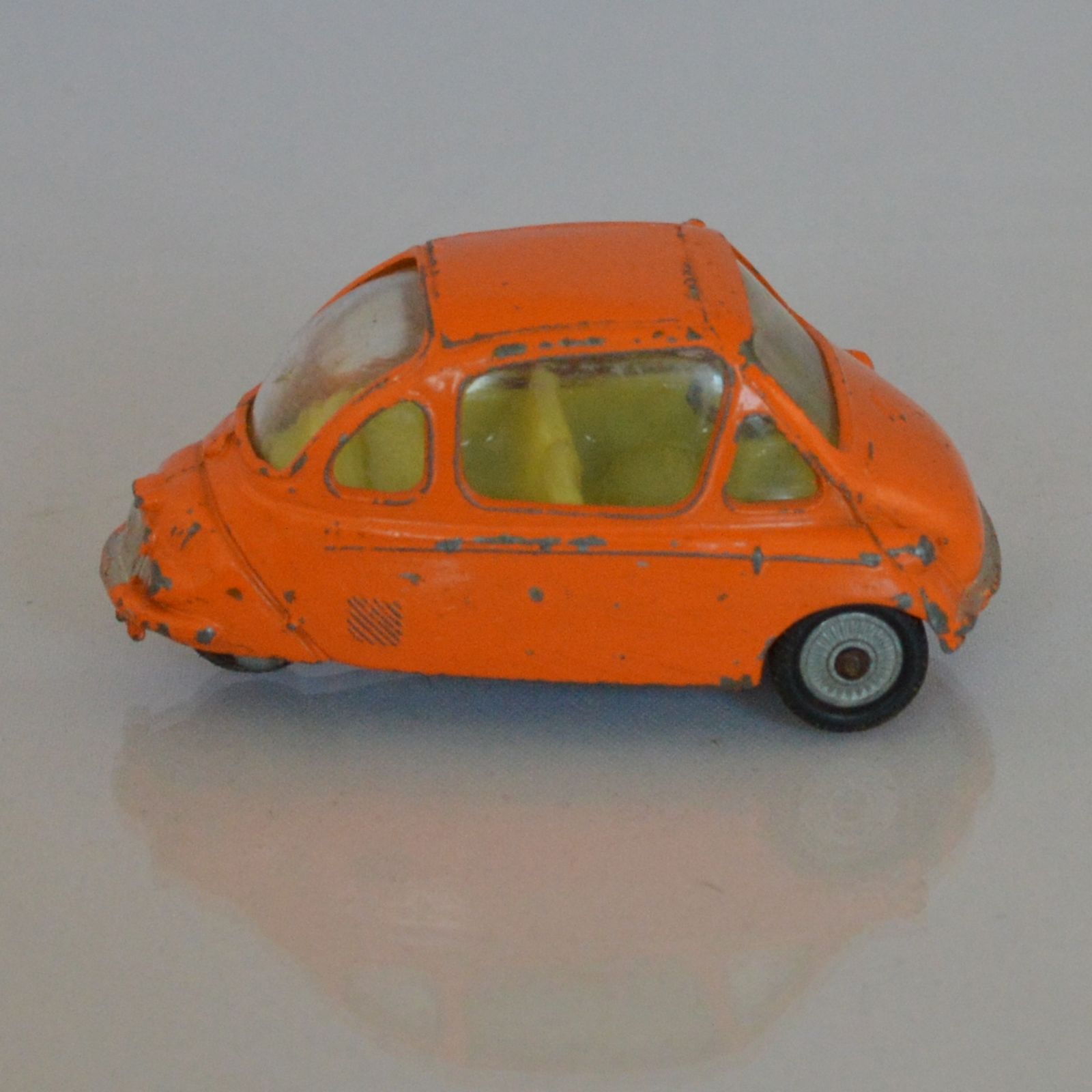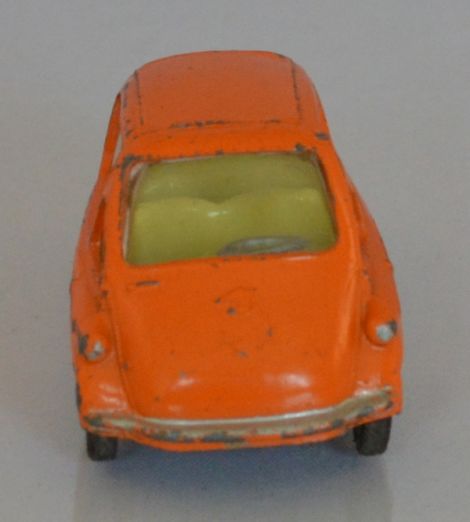Another play-worn model from my youth is this Corgi Toys #233 Heinkel Kabine 153 “Bubble Car” issued circa 1963.
Heinkel Flugzeugwerke was a German aircraft manufacturing company founded by and named after Ernst Heinkel. It is noted for producing bomber aircraft for the Luftwaffe in World War II and for important contributions to high-speed flight, with the pioneering examples of a successful liquid-fueled rocket and a turbojet-powered aircraft in aviation history, with both Heinkel designs’ first flights occurring shortly before the outbreak of World War II in Europe.

Following WWII, Heinkel was prohibited from manufacturing aircraft and instead built bicycles, motor scooters, and the Heinkel Kabine microcar. The Kabine was designed by Heinkel and built from 1956 to 1958.

Kabine production began in March 1956 with the Kabine Model 150, using a 174cc 9.2 hp single-cylinder four-stroke engine that powered the Heinkel Tourist scooter. In October 1956, Heinkel introduced the Kabine Model 153 (with three wheels) and the Kabine Model 154 (with four wheels), both with 204 cc engines. The engines in these models were later reduced in capacity to 198 cc for insurance purposes.

Production was transferred under licence to Dundalk Engineering Company in Ireland in 1958 but the licence was withdrawn shortly afterwards due to poor quality control. Production restarted in 1960, again under licence, by Trojan Cars Ltd. in the UK, and continued until 1966.
Trojan was a British automobile manufacturer producing light cars between 1914 and 1965, and light commercial vehicles for a short time. In 1959 the company was bought by Peter Agg and from 1960 to 1965 they built Heinkel bubble cars under licence, selling them as the Trojan 200, the last vehicle to bear the Trojan name.
Heinkel Kabines were also assembled from 1959 to 1962 under licence by Los Cedros S.A. As Heinkel in Argentina, they were built alongside Studebaker pickups.

The Kabine had a steel unit body with access to the interior via an opening front. In order not to infringe on Iso Rivolta’s patent used on the Isetta, the Kabine’s steering wheel did not move with the door. The fabric sun roof served as an emergency escape hatch should the sole door in front become jammed in a collision. The Kabine featured a reverse gear, unlike some other bubble cars.